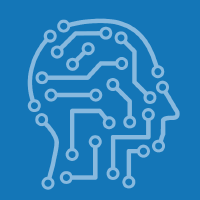Topic Editors


Artificial Intelligence in Public Health: Current Trends and Future Possibilities
Topic Information
Dear Colleagues,
Due to the COVID-19 pandemic, we are witnessing a growing scientific interest in the development and application of artificial intelligence in the health domain. Research in this area is strategic for the development of health systems and is inextricably linked to the development of digital health, both as regards the collection, -monitoring and management of information, and as regards the management of hospital and connected government information systems. Think, for example, of the opportunities presented by wearable monitoring, big data, and robotic surgery. The applications of artificial intelligence have received growing interest in many sectors, such as: organ, functional tissue and cell diagnostics; care robotics, assisting in interventions, rehabilitation and supporting the communication and assistance of disabled people; the biomedicine sector, from genetics to modeling; and precision and personalized biomedicine.
A statement by Henry Ford reported that "real progress happens only when the advantages of a new technology become available to everybody".
The consolidation of technologies based on artificial intelligence in the health domain is intended to bring benefits to everyone, from the stakeholder to the patient, in the form of equity of care.
Artificial intelligence in the future will have a strong impact on:
- The prevention of the onset of diseases in the individual and in society
- The provision of personal care and assistance.
- Society trends regarding diseases and the impact of biological and behavioral factors.
- Organization of hospital activities with regard to treatment, diagnostic and decision-making processes.
Thanks to artificial intelligence, on the one hand, big data will help us to predict diseases on an individual and collective basis and to identify and correct population behaviors; on the other hand, wearable technologies will allow us to monitor and collect individual medical information and to calibrate the care process. The integration of artificial intelligence with virtual reality and augmented reality will allow us to create both virtual medicine services that citizens can access in a simple and direct way, and robotic surgery applications that are increasingly effective and safe.
This topic is very broad, and ranges from scientific development to applications in the health domain, and it also includes ethical and training issues.
This Topic invites authors to contribute on aspects of the research on, development, and application of artificial intelligence in current applications in the health domain and in future scenarios of use.
In this Topic, original research articles, reviews, commentaries, opinions, viewpoints, communications and brief reports are welcome. Research areas may include (but are not limited to) the following:
- Artificial neural networks
- Deep learning
- Care robotics
- Natural language processing
- Social intelligence
- Virtual reality
- Augmented reality
- Medical decision making
- Disease monitoring, prediction, diagnosis, and classification
- Patient monitoring
- Hospital organization
- Diagnostic imaging
- Digital pathology
- Digital radiology.
We look forward to receiving your contributions.
Prof. Dr. Daniele Giansanti
Dr. Giovanni Costantini
Topic Editors
Keywords
- artificial intelligence
- neural networks
- big data
- robotics
- healthcare
- virtual reality
- augmented reality
- digital health
- digital radiology
- digital pathology
Participating Journals
| Journal Name | Impact Factor | CiteScore | Launched Year | First Decision (median) | APC | |
|---|---|---|---|---|---|---|

Applied Sciences
|
2.7 | 4.5 | 2011 | 16.9 Days | CHF 2400 | Submit |

Bioengineering
|
4.6 | 4.2 | 2014 | 17.7 Days | CHF 2700 | Submit |

Healthcare
|
2.8 | 2.7 | 2013 | 19.5 Days | CHF 2700 | Submit |

International Journal of Environmental Research and Public Health
|
- | 5.4 | 2004 | 29.6 Days | CHF 2500 | Submit |

Journal of Clinical Medicine
|
3.9 | 5.4 | 2012 | 17.9 Days | CHF 2600 | Submit |

AI
|
- | - | 2020 | 20.8 Days | CHF 1600 | Submit |

MDPI Topics is cooperating with Preprints.org and has built a direct connection between MDPI journals and Preprints.org. Authors are encouraged to enjoy the benefits by posting a preprint at Preprints.org prior to publication:
- Immediately share your ideas ahead of publication and establish your research priority;
- Protect your idea from being stolen with this time-stamped preprint article;
- Enhance the exposure and impact of your research;
- Receive feedback from your peers in advance;
- Have it indexed in Web of Science (Preprint Citation Index), Google Scholar, Crossref, SHARE, PrePubMed, Scilit and Europe PMC.
Published Papers (12 papers)
Planned Papers
The below list represents only planned manuscripts. Some of these manuscripts have not been received by the Editorial Office yet. Papers submitted to MDPI journals are subject to peer-review.
Title: The Use of Artificial Intelligence Algorithms in the Prevention and Diagnosis of Head and Neck Cancer. Benefits and Prospects for the Future: A Systematic Review
Authors: Luca Michelutti; Alessandro Tel; Marco Zeppieri; Tamara Ius; Salvatore Sembronio; Massimo Robiony
Affiliation: 1. Clinic of Maxillofacial Surgery, Head-Neck and NeuroScience Department, University Hospital of Udine, p.le S. Maria della Misericordia 15, 33100 Udine, Italy; 2. Department of Ophthalmology, University Hospital of Udine, Piazzale S. Maria della Misericordia 15, 33100 Udine, Italy 3. Neurosurgery Unit, Head-Neck and NeuroScience Department, University Hospital of Udine, p.le S. Maria della Misericordia 15, 33100 Udine, Italy
Abstract: Artificial intelligence is proving to be a promising tool for managing the diagnostic and therapeutic course of the head and neck cancer patient. Indeed, several studies have shown how machine learning (ML) and deep learning (DL) algorithms can be tools with great potential in multiple areas of cancer patient management: screening, diagnosis, prognosis, and personalization of therapy. Our systematic review aims to investigate how artificial intelligence can be useful in the study of risk factors and diagnosis of head and neck cancer, offering a general overview of what are the applications of such algorithms, the benefits, and the potential limitations to be overcome in the future. This review is conducted following the PRISMA guidelines.

